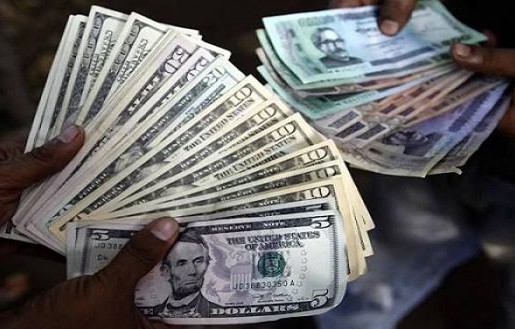Between 9 and 14 July, the local currency appreciated against the US dollar, with the exchange rate strengthening from Tk122.3 to Tk120.1. This appreciation, driven by surging remittances, strong export earnings, and interim government reforms, marks a pivotal shift in the country’s economic outlook.
As an import-dependent economy, a stronger taka brings immediate benefits. It reduces the cost of essential imports such as fuel, edible oils, and raw materials, helping to ease inflationary pressures. Following a 30% depreciation since 2022, inflation peaked around 10% in 2024. The recent reversal in exchange rate trends lowers import costs, stabilises prices, and improves purchasing power, particularly for lower-income groups who have borne the brunt of rising living costs.
The appreciation also alleviates the burden of foreign debt servicing. Bangladesh’s foreign debt became more expensive following a 44.52% devaluation between 2022 and 2024. With reserves having fallen from $48.02 billion in August 2024 to $20 billion by mid-2025, the stronger taka provides crucial fiscal breathing space. It also reduces the cost of external borrowing for local banks and businesses, easing pressure on foreign exchange reserves.
This currency shift reflects underlying economic resilience. Record remittances of $30.33 billion and an 8.58% increase in export earnings to $48.28 billion in the fiscal 2024–25 underscore the country’s improved economic fundamentals. These gains, supported by efforts to curb illicit financial outflows and a transition to market-based exchange rates, have bolstered investor confidence. The shift by US buyers away from Chinese suppliers amid proposed tariff changes also benefits Bangladesh’s ready-made garment (RMG) sector. Alongside Vietnam, Bangladesh is well-positioned to capture this shifting demand, potentially attracting not only new orders but also investment from cost-conscious Chinese manufacturers.
The appreciation of the taka aligns with the interim government’s broader reform agenda. Since August 2024, reforms have included stricter regulation of currency markets and a stronger commitment to market-based exchange rates. The Bangladesh Bank’s recent purchase of $171 million from commercial banks at Tk121.5 per dollar illustrates its active role in maintaining exchange rate stability.
While the stronger taka offers a window of opportunity to consolidate economic gains, attract investment, and restore financial stability, it also introduces several challenges. Export competitiveness is at risk, as Bangladeshi goods become more expensive on the global market. The RMG sector, which accounts for over 80% of the country’s export earnings and heavily relies on the US market, may see a decline in demand. A weaker dollar, combined with rising inflation in the United States, could further dampen consumer spending and reduce orders.
Remittance inflows are also vulnerable. A stronger taka diminishes the local currency value of remittances, potentially discouraging expatriate Bangladeshis from sending money home. This poses a threat to one of the economy’s most vital lifelines and could further strain foreign exchange reserves. The Bangladesh Bank’s intervention in the foreign exchange market highlights the seriousness of this risk.
Bangladesh’s limited reserve diversification also limits its ability to benefit from global currency shifts. With 90% of reserves held in US dollars, the country does not gain significantly from changes in the dollar’s value relative to other currencies. Nations with more diversified reserve portfolios are better positioned to navigate such fluctuations.
External factors pose additional inflation risks. While a stronger taka helps make imports cheaper, global developments such as US tariffs on Chinese goods or renewed supply chain disruptions could still lead to rising prices. If US inflation increases as a result of a weakening dollar, American consumers may further cut back on discretionary spending, which would impact Bangladeshi exports, particularly garments.
The appreciation of the taka also comes at a politically sensitive time. Although recent economic gains strengthen the interim government’s credibility, public sentiment remains divided. Ongoing unrest and high-profile controversies, including the Sohag killing and allegations of corruption, fuel scepticism. Critics argue that the benefits of a stronger taka are disproportionately favouring importers and business elites, while exporters and remitters bear the losses. This perceived imbalance risks deepening social discontent and widening inequality.
The current appreciation reverses the sharp depreciation of the taka triggered by global shocks such as the Russia-Ukraine war and domestic economic mismanagement under the previous government. The Bangladesh Bank has implemented a market-based exchange rate regime since May this year. These reforms have improved exchange rate transparency and restored a degree of investor trust. Nonetheless, the central bank’s ongoing interventions signal the challenge of sustaining appreciation without compromising export competitiveness.
To secure long-term gains, Bangladesh must take several strategic steps. It needs to diversify its export markets to reduce reliance on the US and European Union. Strengthening remittance channels through targeted incentives and digital solutions is essential to maintain inflows. Reserve management must be improved by diversifying currency holdings beyond the US dollar. Moreover, deeper structural reforms are necessary to tackle corruption, strengthen institutions, and ensure political stability.
In conclusion, the appreciation of the taka presents both opportunities and risks. It offers near-term relief on inflation, debt servicing, and investor sentiment, reinforcing the interim government’s reform efforts ahead of the 2026 elections. However, threats to exports, remittances, and reserve sustainability remain significant. Strategic policymaking, continued reform, and political steadiness will be essential to translate this currency strength into durable economic and social progress. Without this, recent gains could erode, undermining both economic recovery and public trust.


